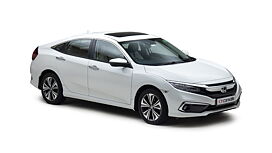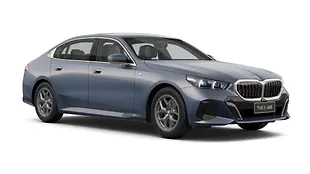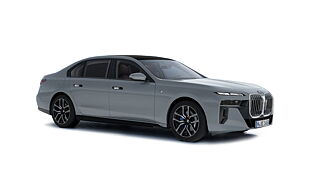Introduction

Assam is known for its beautiful tea plantations and wildlife, yet, it is one of the few lesser-explored regions in India. We were in Guwahati for the ninth edition of Honda's Drive to Discover to get a wind of this untouched beauty and the lush green countryside of the North East. Plan was to drive through Assam towards the far-east region of India - Arunachal Pradesh. And to make things more exciting, we had the new Honda CR-V and Civic with us. Let's get to the journey then.

Drive Day 1 - Flag off from Guwahati

Our drive began from the Assamese city of Guwahati, which is the most accessible of all the places in North East. We were a group of 26 journalists from different parts of India and were given a brief on what locations we would be visiting. The winding roads took us out of the main city as we settled in the CR-V's roomy cabin with a high quality interior. This 152bhp and 188Nm of torque producing 2.0-litre petrol 2WD SUV is known for its smooth drivetrain and car-like handling. Paired with a CVT gearbox, we just put it in drive mode and enjoyed the scenery outside. The journey was a mix of straight highways, diversions, countryside terrain, narrow roads and bridges. Most traffic was only in the form of cattle out on the road. We also drove through Kaziranga sanctuary, which is a world heritage site and home to two-third of the world's entire population of one-horned rhinoceroses. With no luck in spotting one, we took our first break for lunch at an old rustic place called Wild Grass.

From there, we moved on towards Neimati ghat to enter Majuli. We had to ferry our cars on the great MV Bhupen Hazarika across the mighty Brahmaputra river. This river passes through many different regions and often floods the villages during monsoons. This is the main reason why the locals mostly stay in Borneo-style stilted houses.

Majuli is the world's largest inhabited freshwater river island and it attracts tourists from across the world. It is also the first island in India to be given the status of a district. Here we were welcomed with hand-made scarves by the Mising Tribe, an indigenous tribal community and the original inhabitants. They are known for their culinary expertise, knowledge of herbs and the local Ooinitam dance. After all, this island has always been at heart of Assamese culture and is home to a number of old traditions.

Drive Day 2 – Majuli to Dibrugarh

The next day we had the petrol powered Civic with us to drive from Majuli to Dibrugarh. We spent some time with the local kids taking a dip in the river. It was quite a refresher, especially in the heat. Once we were out of Majuli, the roads widened and gave us chance to sprint with the automatic Civic and make use of the 140bhp, 174Nm of torque from its 1.8-litre engine. Complementing it is its automatic gearbox and a planted ride, good enough for the car to be a long-distance runner.

And before we headed to our destination, we decided to cross the Assam-Arunachal border and drive to Pasighat. On the route was Jonai, a small town on this border that connects to the rest of the country through NH-52. Also, it has the last railway station that stretches to the east. We continued cruising comfortably till our lunch halt at an ecotourism resort - Donyi Hango. We were served a spicy Arunachali meal that was prepared in a home-style kitchen. Thanks to this regional experience, we also got an idea of what else this place is famous for. Bhut Jolokia, the world's most pungent chilly.

As we reached Pasighat, the Brahmaputra made its appearance yet again, but here it was called the siang or dihang. The clouds floating on the river stream was a delight to watch. Then the drive from Pasighat to Dibrugarh was comfortable with good roads all the way. However, the best part was the new Bogibeel bridge, which is a rail-cum-road bridge over a river and it is not only the largest in India, but also the second largest in the world. Earlier it used to take two hours to cross the river on a ferry, but now it takes only about 10 to 15 minutes. This bridge is also the third of its kind, a long-pending demand of the army and locals. Since we reached late, it was dark with no view of the river. But, thankfully the bridge was all lit up giving us a different perspective. We sprinted across to reach Dibrugarh from where more than 50 per cent of Assam’s tea production comes. No wonder it's also called the tea city of India!

Drive Day 3 – Dibrugarh to Kaziranga

Our departure from Dibrugarh to Kaziranga was via the Gibbon wildlife sanctuary. Here we were looking at the second most famous topography of the north east - the forests. This time we had the automatic diesel CR-V. The absence of a parking brake lever meant a lot of space in the lower centre console. We loaded it up with chip packets, chocolates and cookies, to gear up for the long journey. Though we didn't use the third row of seats, the second row was even more comfortable thanks to the roof mounted vents apart from the floor mounted air-con vents. The panoramic sunroof added to the delight for better sense of space while we could relax and notice the trees and clouds passing by.

Soon after, it started raining cats and dogs and we could hardly see a thing, but it just added to the entire experience. I was glad we were in this SUV with bigger 18-inch wheels. Most of the potholes were taken care of. Also, this is powered by the 1.6-litre diesel motor. With so much of torque, we were making most of its mid-range grunt. And it was fun to drive along those narrow roads. Then, at our stay at Kaziranga, we were again treated to a few local dances and souvenirs that we could take back home.

Drive Day 4 – Kaziranga to Guwahati

On our last leg of the journey to Guwahati, we were hoping for some wildlife sightings! And while we were slowly starting to lose interest after not spotting anything for so long, the turbocharged diesel manual Civic kept us engaged in driving. Nonetheless, we kept driving through Kaziranga sanctuary and eventually it didn't disappoint us. Though at a distance, the one-horned Rhinocerous made its appearance twice. This was one of the best highlights of this drive! We were then back on our way to the Guwahati airport where our four-day drive would culminate after covering a distance of more than 1,300km.

This annual drive event turned out to be an exceptional experiential drive. Not only did we explore the exotic destinations, lush countryside, flat highways and even congested town roads; but also the cars for their quality, durability and reliability during this long journey. So there it is, if you are the kind of traveller who likes to spend time with the locals, try local cuisine and yet have an intimate quiet vacation far away from the crowd - Assam-Arunachal are the places to visit. Such nice off-beat non-touristy places displaying vivid colours of these states that you can just slow down and appreciate the the smallest things in life that bring you joy. I'm glad I've watched more of sunrises and sunsets this year than episodes on Netflix.

Pictures by Ninad Ambre





























